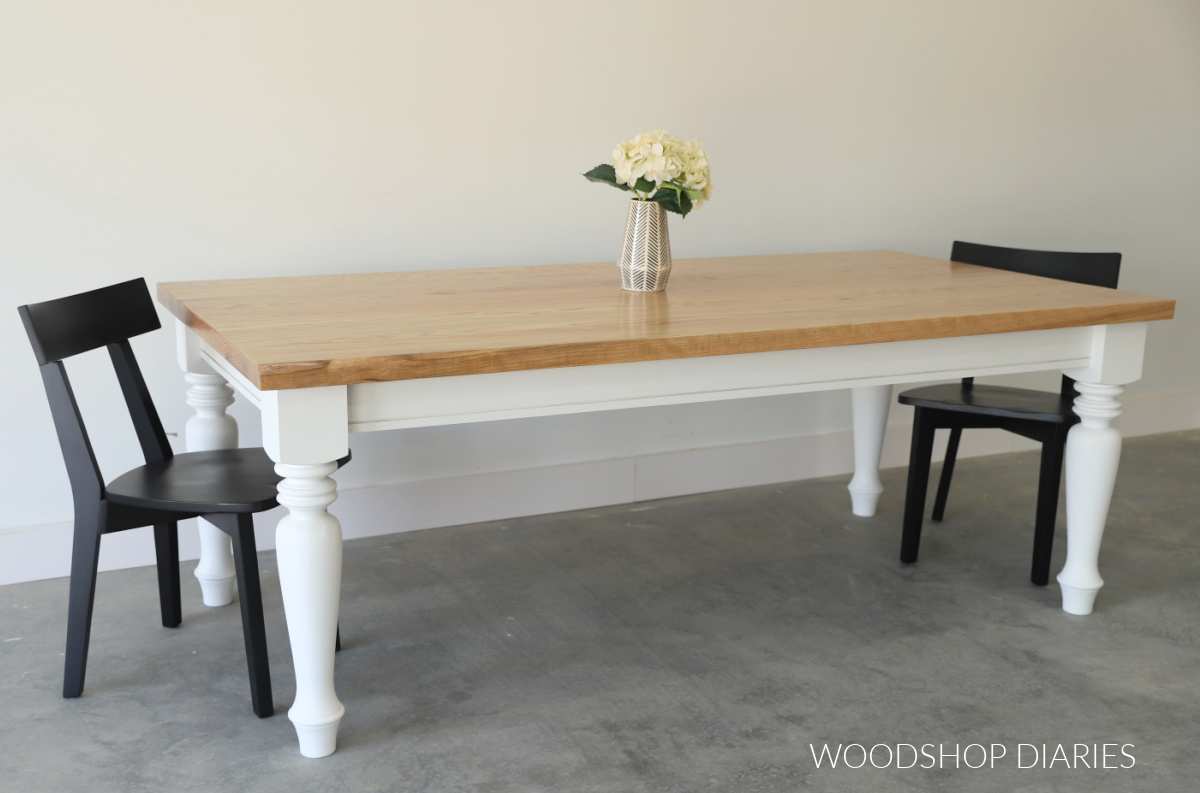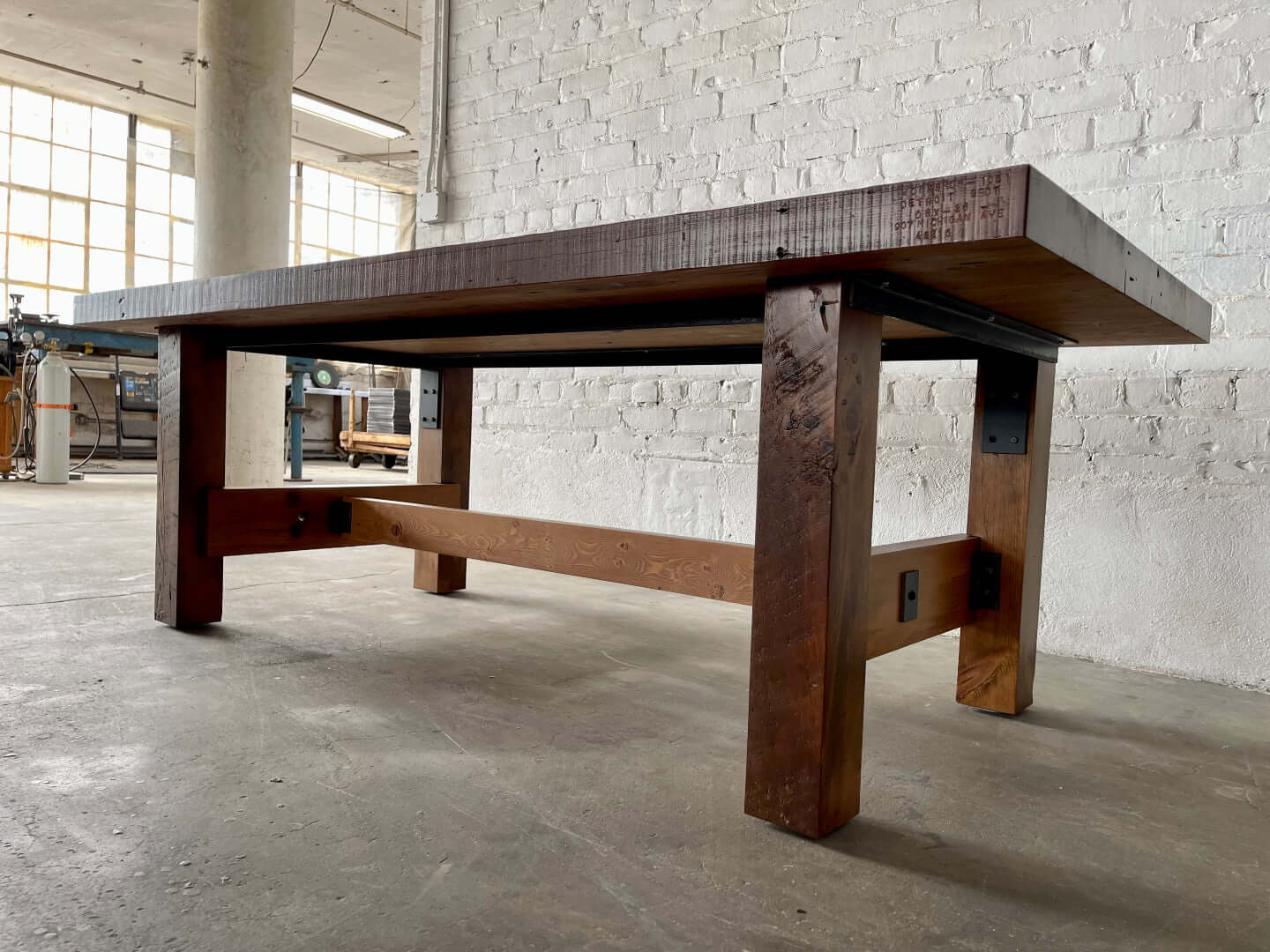Personalize Your Table with Distinct Dining Table Legs Wood Creations
What to Consider When Picking Dining Table Legs Wood for Your Home.
When choosing wood for dining table legs, a number of crucial factors necessitate cautious factor to consider to guarantee both functionality and visual appeal. The sort of timber picked can substantially influence the table's resilience, stability, and total design, while the upkeep demands might impact long-term functionality. In addition, the interplay of grain patterns and shade with existing furnishings can produce a cohesive layout. Understanding these elements is essential, yet numerous forget the crucial aspect of financial constraints. As we explore these factors to consider even more, the effects of your selections might disclose unexpected obstacles and chances.

Value of Timber Kind
When choosing dining table legs, the selection of wood kind plays an important duty in establishing both appearances and longevity. Various wood types provide differing levels of strength, weight, and resistance to wear, which can considerably influence the performance and longevity of the table. Woods such as oak, maple, and cherry are typically favored for their durable nature and ability to endure daily usage. These woods not just offer architectural honesty but additionally resist scrapes and damages better than softer alternatives.
On the other hand, softer woods like ache or poplar, while a lot more cost-effective, might not use the exact same degree of toughness and might need even more regular upkeep or substitute. The wood kind also influences the table's ability to withstand ecological aspects such as humidity and temperature level variations. The selection of timber can influence the ease of staining and completing, which can be vital for accomplishing the preferred appearance.
Visual Considerations
The aesthetic allure of eating table legs dramatically adds to the general aesthetic of the eating space. Dining Table Legs Wood. When choosing timber for eating table legs, the grain color, pattern, and surface are crucial aspects that can detract or boost from the space's layout. Different timber types display differing structures and colors; for instance, oak offers a traditional look with popular grain, while walnut supplies a rich, dark style
Additionally, the shape of the legs plays an important function in specifying the table's character. Smooth, minimal legs can develop a contemporary feeling, while more elaborate, transformed legs evoke typical charm. The style of the legs need to harmonize with existing furniture and the total theme of the space, whether it be rustic, contemporary, or transitional.
It is also vital to take into consideration just how the legs interact with other furniture items, including sideboards and chairs. A natural design not only raises the eating experience yet also adds to the home's total aesthetic comprehensibility. Eventually, the choice of table legs ought to be a thoughtful choice that reflects individual taste while ensuring visual harmony within the area.

Sturdiness and Security
Durability and security are vital factors in the choice of table legs, as they directly influence the long life and safety of the furnishings. When picking wood for dining table legs, one should take into consideration the intrinsic residential or commercial properties of numerous timber types. Woods, such as oak, cherry, and maple, are often chosen for their strength and resistance to use, making them ideal for high-traffic eating areas.
In addition to the sort of timber, the construction method additionally plays a considerable duty in the overall stability of the table. Legs that are sturdily created, either with conventional joinery strategies or modern-day design approaches, will supply enhanced support and protect against wobbling. It is necessary to evaluate the visit this site right here thickness and style of the legs; thicker legs are typically much more stable and can hold up against higher weight.
Additionally, the environmental conditions in which the table will certainly be utilized can influence sturdiness. Timber that has actually been appropriately treated for dampness resistance will certainly carry out much better in humid environments. Inevitably, choosing the appropriate mix of durable wood and stable construction will certainly ensure that your eating table continues to be a risk-free and useful focal point in your home for several years ahead.
Maintenance Needs
Selecting eating table legs made from long lasting wood is simply the start; recognizing maintenance requirements is equally important to protect their appearance and functionality. Different timber kinds need varying levels of care, so it is important to know what is required for your particular selection.
Regular cleansing is essential; utilize a soft, wet cloth to remove dirt and debris. Avoid rough chemicals that can harm the finish. For timber coatings like varnish or lacquer, periodic polishing with furnishings wax can improve luster and provide a safety layer against scrapes.
Preventative actions are critical also. Use rollercoasters and placemats to stay clear of direct contact with damp or warm things, which can warp or discolor the timber. Additionally, take into consideration placing really felt pads under the legs to stop scrapes on your floor covering and minimize wear on the wood
Moisture control is one more significant factor; maintaining a steady setting aids to avoid warping and splitting. If your eating location is vulnerable to fluctuations in temperature and moisture, think about utilizing a humidifier or dehumidifier as needed.
Spending Plan and Price Variables
When intending to buy dining table legs, recognizing budget plan and cost variables is essential to make an educated decision. The type of timber selected for the legs significantly affects the overall rate.
Labor and workmanship also play a crucial duty in the overall expenditure. Handmade or artisan-crafted legs may bring a costs cost tag, mirroring the skill and time purchased their production. It's important to analyze the balance in between quality and expense; spending much more ahead of time can lead to a longer-lasting product that calls for much less maintenance gradually.
Verdict
In summary, choosing the ideal wood for dining table legs demands mindful consideration of different aspects, consisting of wood type, aesthetic allure, upkeep, durability, Learn More and budget plan restraints. The selection of woods such as oak and maple can boost both stamina and aesthetic charm, while softer timbers might be a lot more affordable yet much less long-lasting. Inevitably, an educated choice pertaining to product option will certainly add to the total capability and long life of the table, making sure a read this beneficial financial investment for the home.
When choosing wood for dining table legs, several essential factors warrant careful consideration to make sure both performance and aesthetic appeal.When selecting eating table legs, the option of wood type plays an essential role in establishing both visual appeals and resilience. When selecting timber for dining table legs, the grain pattern, color, and coating are critical elements that can enhance or take away from the space's design. When picking wood for eating table legs, one must consider the inherent residential or commercial properties of various timber types.In recap, selecting the ideal wood for eating table legs requires careful factor to consider of various variables, including wood kind, aesthetic allure, sturdiness, spending plan, and maintenance constraints.